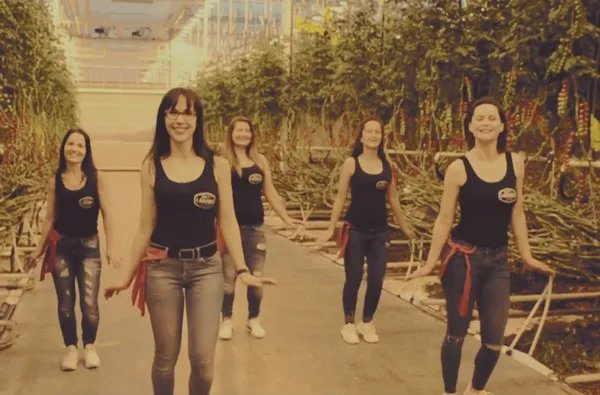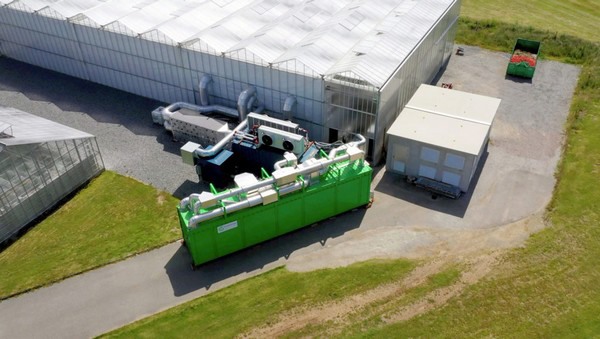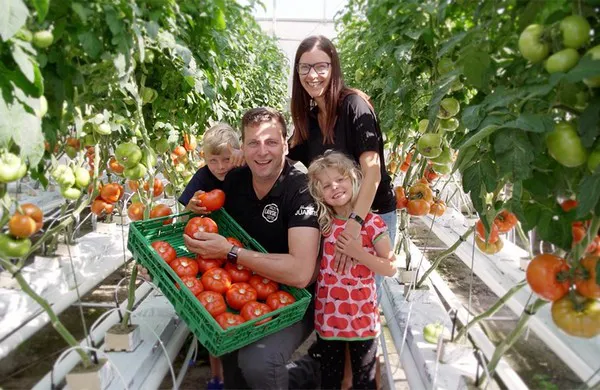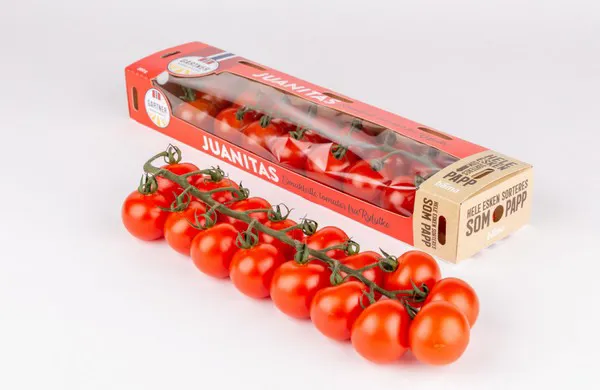Remixing the notorious Tomatsangen pop song is the smallest new project Lauvsnes Gartneri has undertaken this year. Expanding their hybrid LED system, for example, or capturing outside CO2 and bringing this in the greenhouse to improve plant growth are also on the agenda.
Lauvsnes Gartneri is a tomato greenhouse company situated east of Lauvsnes village on the island of Finnøy in Ryfylke (Norway), owned by Jan Terje Vignes, a fourth-generation grower. With an acreage of 30 hectares of tomatoes under glass, the production is up to 1,000 tons of "Juanita tomatoes" each year. Some years ago, the company recorder their famous “tomatsangen”, and this year they did a remix. “It was great fun and a wonderful teambuilding opportunity,” says Jan Terje Vignes, with Lauvsnes Gartneri. “But it has been a good PR as well.”

Tomatsangen in the greenhouse
Remixing the company song is only the smallest new project the company has undertaken this year. “Right now we are using HPS lights, but this year we will expand our hybrid LED system, we already installed it in one section and next Fall we will set up the next. We light year-round because of the climate here, so it is quite worth the investment,” Jan Terje tells. Dutch LED provider Gavita will provide the lighting system.
Novel capturing technique
However, the company has made an even bolder move. They are the first grower to make use of GreenCap Solutions’ novel technique: capturing outside CO2 and bringing this in the greenhouse to improve plant growth. “With their Environment Control System (ECS), the greenhouse is closed to keep the CO2 inside, whilst the air is rotated on a slow speed, to create a perfectly balanced atmosphere. A relatively simple solution to create 40% more plant growth with no CO2 emission whatsoever. Besides, we will reduce our water use with two-third,” Jan Terje explains. (For a more detailed explanation of the technology, read last week’s article).

A picture of GreenCap Solutions' Environment Control System (Photo courtesy of GreenCap Solutions)
The companies met by coincidence: “There is a science center for horticulture close to our company. I had been attending their product demonstrations for some time, and I was convinced of the efficiency of their new product. It has proved to work, so we are installing it in 3 ha of our acreage. Several companies are working with it now, but we were the first to start it.”
Sustainability was the main motive for Lauvsnes Gartneri to get the ECS. “For years, we had been using green electricity. However, we were still using North Sea gas, and we wanted to do something about this. This ECS is the kind of approach we were aiming for: a brighter, future-oriented system that makes us independent of fossil fuels.” The closed system is to start production by the end of 2021, and the CO2 capturing will be implemented next spring.

Jan Terje Vignes with his wife, Lisa Vignes, and their children.
Broad application
Jan Terje is convinced that the technology behind the system will work for other growers too. “There is a government grant available to support sustainable companies, to start with. Besides, there is a growing demand for local, sustainable produce that growers have to meet.”
Lauvsnes Gartneri grows various sizes of tomatoes. “We also see a growing demand for our special tomatoes. Lately, the worldwide commodities shortage has resulted in delays in paper and plastic deliveries. It takes many months to arrive and you need to plan ahead much longer. Hopefully, this will improve soon. Besides, we need more workers for small tomatoes, which is also harder now. Most of our workers are here year-round, but seasonal workers haven’t been able to enter the country this year.”

Lauvsnes Gartneri's best known tomatoes: Juanitas
Jan Terje is proud to take his fourth-generation family company to a new, carbon-neutral level. “We’ve been growing tomatoes ever since 1935, when my great-great-grandfather started the company. The future is carbon neutral, so I am proud to take our heritage towards that direction.”
For more information:
Lauvsnes Gartneri
www.lgartneri.no
